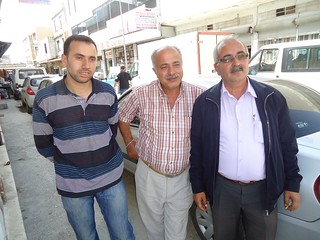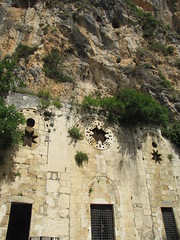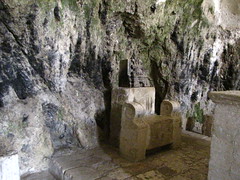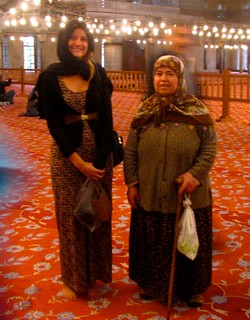After spending a weekend in Hatay and really delving into the Syrian conflict, I heard the word “Alawite” being thrown around a lot. Who are the Alawites? Are they Muslims?
In Hatay I observed people of many different faiths engaging socially as friends and business partners. I even snapped a picture of these three men who are good friends– One is an Alawite (left,) One is Christian (middle,) and one is Sunni Muslim (right.)

While walking around Antakya, I asked casual questions about what it meant to be Alawite. One man I met at a jewelry shop, Mehmood, was a practicing Alawite, or Alawi. He explained that Alawites are a branch of the twelver sect of Shi’a Islam.
In a nutshell, it seems the schism of Sunni and Shi’a Islam is rooted in a disagreement of the succession of the caliphate after the Prophet Muhammed’s death. The name Alawite is reportedly derived from the name Ali Ibn Abi Talib, the last of the “Rightly Guided Caliphs” of Islam. Shi’a Muslims apparently regard Ali as the first Shi’a Imam.
Our translator Mehmet gave us his interpretation. He said Alawites do not attend “normal” mosques, and he understood that many do not believe in the literal meaning of the Qura’an. They supposedly do not pray five times a day as observant Sunnis and Shi’as do. It is hard to strictly define what observant Alawites do and do not do, since their practices vary across nations and even neighborhoods and are highly disputed among other sects of Shiism.
Alawites are most highly concentrated in Syria, mainly in the cities of Hama and Homs. The current President of Syria, Bashar Al-Assad, is Alawite. While concentrated in Syria, Alawites reportedly make up only about 12% of the Syrian population.
Alawites in other countries are sometimes referred to as Nusairis or Ansaris.There is also a religious population in Turkey known as the Alevis. I find the distinction between Alawites and Alevis to be unclear.
In my quest to define what it means to be Alawite, a few people told me Alawites and Alevis were one and the same, while others told me they are separate faiths within the spectrum of Shiism that should not be confused. Even in my research, some sources claimed they were the same while some firmly refuted the same idea. A few of my questions regarding the Alawite faith are still unanswered, so my quest continues. I’ll keep you updated!










